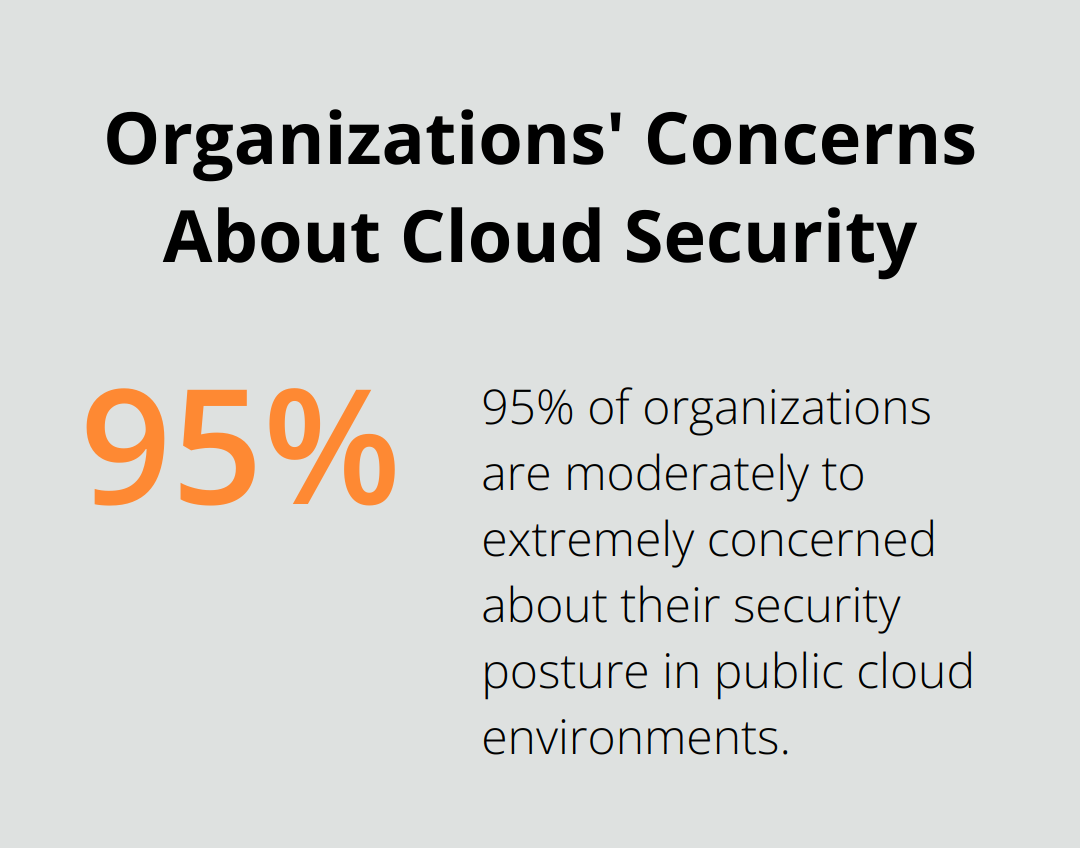Network as a Service (NaaS) is transforming the way businesses approach cloud computing. This innovative model offers unparalleled flexibility, scalability, and cost-effectiveness compared to traditional networking solutions.
At Clouddle, we’ve seen firsthand how NaaS is reshaping industries from hospitality to healthcare. In this post, we’ll explore the game-changing benefits of Network as a Service in cloud computing and why it’s becoming the go-to choice for forward-thinking organizations.
What is Network as a Service?
Network as a Service (NaaS) revolutionizes how businesses manage their IT infrastructure. This emerging model allows organizations to consume network infrastructure through flexible operating expense (OpEx) subscriptions, eliminating the need for businesses to own and maintain physical network hardware.
The Building Blocks of NaaS
NaaS typically includes several key components:
- Network infrastructure: Routers, switches, and other networking equipment managed by the service provider.
- Network security: Built-in firewalls, intrusion detection systems, and other security measures.
- Network management: Tools for monitoring, troubleshooting, and optimizing network performance.
- Connectivity services: Internet access, VPN, and other connectivity options.
NaaS vs Traditional Networking
The main difference between NaaS and traditional networking lies in ownership and management. Traditional models require businesses to buy, install, and maintain their own network hardware, incurring significant upfront costs and ongoing IT expertise.
NaaS shifts the responsibility to the service provider, who owns and manages the network infrastructure. Businesses simply pay for the network services they use, similar to other utility services. This transition from a capital expenditure (CapEx) model to an operational expenditure (OpEx) model transforms how organizations approach networking.
The Business Case for NaaS
NaaS offers several compelling benefits for businesses:
- Cost savings: NaaS can significantly lower networking costs by eliminating upfront hardware investments and reducing IT staffing requirements. MarketsandMarkets predicts the NaaS market will grow from $10.4 billion in 2021 to $37.5 billion by 2026, largely driven by these cost benefits.

- Scalability: Businesses can easily scale their network resources up or down based on demand. This flexibility proves particularly valuable for organizations with seasonal fluctuations or rapid growth.
- Improved performance: NaaS providers typically use enterprise-grade equipment and employ teams of networking experts, which can lead to better network performance and reliability.
- Enhanced security: Advanced security features often come as part of the NaaS package, helping businesses stay protected against evolving cyber threats.
- Focus on core business: Offloading network management to a service provider allows businesses to concentrate more on their core competencies rather than IT infrastructure.
Considerations for NaaS Adoption
While NaaS offers numerous advantages, businesses must carefully evaluate their specific needs and circumstances when considering a switch to this model. Factors to consider include:
- Existing infrastructure investments
- Compliance requirements
- The criticality of network control
- Integration with current systems
As we explore the real-world applications of NaaS in the next section, you’ll see how various industries (hospitality, multi-family dwellings, and senior living facilities) leverage this innovative networking model to streamline operations and enhance connectivity.
How NaaS Transforms Industries
Revolutionizing Hospitality
Network as a Service (NaaS) has become a game-changer in the hospitality industry. Hotels and resorts now offer seamless, high-speed Wi-Fi throughout their properties without the hassle of managing complex network infrastructure. This transformation allows guests to stream content, work remotely, and stay connected with ease.
Hotel rates are forecasted to rise in most locations around the world and by as much as 17.5% in some cities in 2025. This increase may be partially attributed to investments in improved services, including network infrastructure.
NaaS also facilitates the integration of smart room technologies, such as voice-activated controls and IoT devices. Hotels can now implement advanced security measures, protecting guest data and complying with industry regulations more effectively.
Empowering Multi-Family Housing
In multi-family dwellings, NaaS addresses the growing demand for reliable, high-speed internet access. A survey by the National Multifamily Housing Council found that 92% of renters consider high-speed internet access an important factor when choosing an apartment.

Property managers now offer robust Wi-Fi coverage throughout their buildings (including common areas and outdoor spaces). This approach not only attracts tech-savvy tenants but also opens up new revenue streams through tiered internet packages.
NaaS supports the implementation of smart building technologies, such as keyless entry systems, smart thermostats, and security cameras. These features improve building efficiency, reduce operational costs, and enhance resident safety.
Transforming Senior Living Facilities
NaaS plays a vital role in improving resident care and operational efficiency in senior living facilities. The adoption of telehealth services in senior care has surged, particularly during the COVID-19 pandemic.
Older adults face unique barriers to adoption of telehealth, and the coronavirus disease 2019 pandemic has provided a “natural experiment” in telehealth implementation. Senior living facilities now support telehealth initiatives by providing reliable, high-speed connectivity for video consultations and remote monitoring. This improvement enhances access to healthcare services and reduces the need for residents to travel for routine check-ups.
NaaS enables the implementation of IoT devices for fall detection, medication reminders, and activity monitoring. These technologies enhance resident safety and allow staff to provide more personalized care.
The transformation brought about by NaaS extends beyond operational improvements. It also facilitates better communication between residents and their families through reliable video calling and social media access, combating social isolation often experienced by seniors.
As we’ve explored the transformative power of NaaS across various industries, it’s clear that this technology offers significant benefits. However, implementing NaaS comes with its own set of challenges. In the next section, we’ll address these hurdles and provide strategies to overcome them, ensuring a smooth transition to this revolutionary networking model.
Navigating NaaS Implementation Hurdles
Fortifying Security in a NaaS Environment
95% of organizations are moderately to extremely concerned about their security posture in a public cloud environment. To address these concerns, organizations should:

- Conduct thorough vendor assessments (focus on security certifications, data protection measures, and compliance with industry standards).
- Implement multi-factor authentication and encrypt data both in transit and at rest.
- Regularly audit and update access controls to ensure only authorized personnel can access sensitive network resources.
- Use built-in security features offered by NaaS providers, such as next-generation firewalls and intrusion detection systems.
Seamless Integration with Legacy Systems
Integrating NaaS with existing IT infrastructure can be complex. 70% of companies will employ hybrid or multi-cloud management technologies, tools, and processes. To ensure a smooth transition:
- Start with a comprehensive inventory of your current network infrastructure and applications.
- Work closely with your NaaS provider to develop a phased migration plan (prioritize less critical systems first).
- Use APIs and middleware solutions to bridge the gap between legacy systems and new NaaS components.
- Conduct thorough testing at each stage of the integration process to identify and resolve compatibility issues early.
Managing the Transition from Traditional Networks
The shift from traditional networks to NaaS requires careful planning and change management. According to a McKinsey study, 70% of change programs fail to achieve their goals, largely due to employee resistance and lack of management support. To manage this transition effectively:
- Develop a clear communication strategy to explain the benefits of NaaS to all stakeholders, including IT staff and end-users.
- Provide comprehensive training programs to equip your IT team with the skills needed to manage and optimize the new NaaS environment.
- Consider partnering with a managed service provider to support the transition and ongoing management of your NaaS solution.
- Establish key performance indicators (KPIs) to measure the success of your NaaS implementation, such as network uptime, cost savings, and user satisfaction.
Overcoming Vendor Lock-in Concerns
Many organizations worry about vendor lock-in when adopting NaaS solutions. To mitigate this risk:
- Choose providers that support open standards and offer interoperability with other platforms.
- Negotiate clear exit clauses and data portability terms in your service level agreements (SLAs).
- Maintain documentation of your network architecture and configurations to facilitate potential future migrations.
- Consider a multi-vendor strategy to reduce dependence on a single provider.
By addressing these implementation hurdles, organizations can successfully navigate the transition to NaaS and leverage its benefits for improved network performance and scalability. Remember, with the right approach and support, these challenges can be overcome, paving the way for a more efficient and flexible network infrastructure.
Final Thoughts
Network as a Service (NaaS) revolutionizes cloud computing, offering businesses unparalleled flexibility, scalability, and cost-effectiveness. This innovative model transforms industries from hospitality to senior living, streamlining operations and enhancing connectivity. The NaaS market will reach $37.5 billion by 2026, driven by reduced upfront costs, improved scalability, and enhanced security.
Emerging trends in NaaS technology will further revolutionize network management. Edge computing integration, AI-driven network optimization, and advanced security features will enable businesses to create more responsive, efficient, and secure network environments. These developments allow for rapid adaptation to new technologies and market demands without the burden of managing complex network infrastructure.
Clouddle empowers businesses across various industries with NaaS solutions. We combine networking, entertainment, and security into a seamless package, enabling our clients to focus on their core operations. NaaS shapes the future of networking, unlocking new possibilities and driving innovation in an increasingly connected world.


